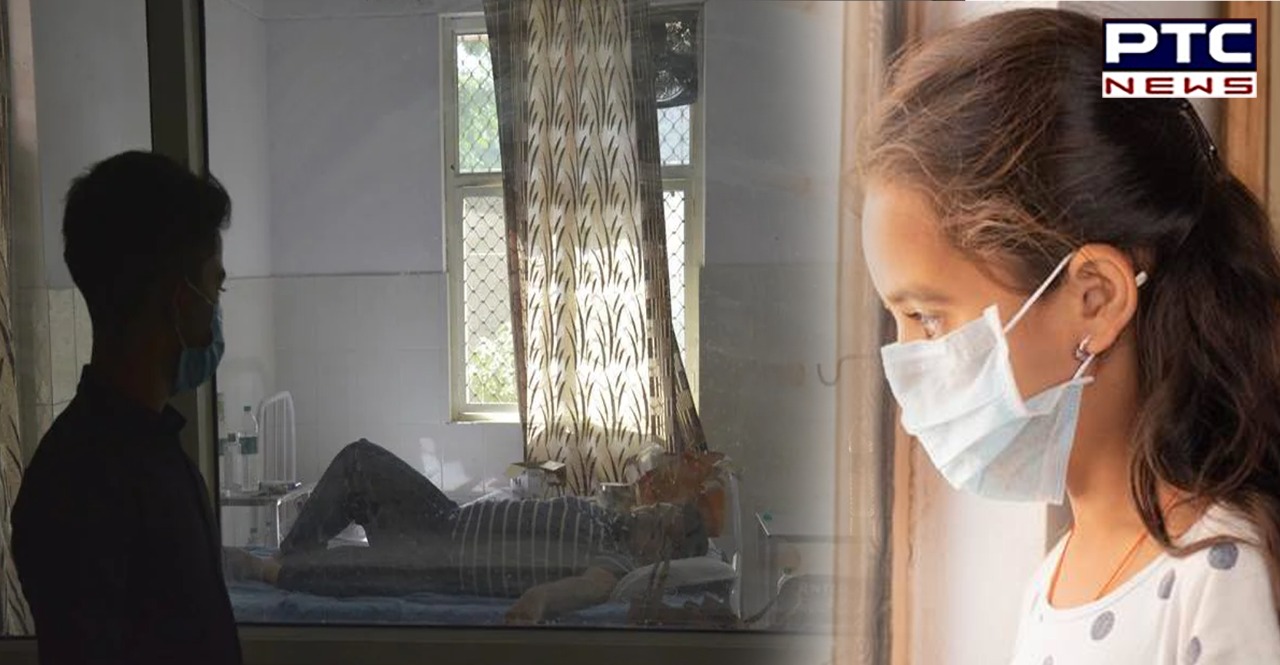Centre issues revised guidelines for home isolation of mild, asymptomatic COVID-19 cases
Rajan Nath
April 29th 2021 06:31 PM --
Updated:
April 29th 2021 06:38 PM

Amid a surge in coronavirus cases in India that resulted in a shortage of beds, the oxygen supply in hospitals, and isolation centers, the Union health ministry on Thursday revised the home isolation guidelines of mild and asymptomatic Covid-19 patients.
 As per the guidelines, mild and asymptomatic patients have been recommended for home isolation, an official statement said.
Also Read | Coronavirus India: PM Narendra Modi a ‘super-spreader’ of COVID-19, says IMA Vice President
As per the guidelines, mild and asymptomatic patients have been recommended for home isolation, an official statement said.
Also Read | Coronavirus India: PM Narendra Modi a ‘super-spreader’ of COVID-19, says IMA Vice President
 Complete guidelines for home isolation as released by the health ministry:
Patients eligible for home isolation
Complete guidelines for home isolation as released by the health ministry:
Patients eligible for home isolation
- The patient should be clinically assigned as mild/ asymptomatic case by the treating Medical Officer.
- Such cases should have the requisite facility at their residence for self-isolation and for quarantining the family contacts.
- A caregiver should be available to provide care on a 24 x7 basis. A communication link between the caregiver and hospital is a prerequisite for the entire duration of home isolation.
- Elderly patients aged more than 60 years and those with co-morbid conditions such as Hypertension, Diabetes, Heart disease, Chronic lung/liver/ kidney disease, Cerebro-vascular disease etc shall only be allowed home isolation after proper evaluation by the treating medical officer.
- Patients suffering from immune-compromised status (HIV, Transplant recipients, Cancer therapy etc.) are not recommended for home isolation and shall only be allowed home isolation after proper evaluation by the treating medical officer.
- The caregiver and all close contacts of such cases should take Hydroxychloroquine prophylaxis as per the protocol and as prescribed by the treating medical officer.
 Instructions for the COVID-19 patient
Instructions for the COVID-19 patient
- The patient must isolate himself from other household members, stay in the identified room, and away from other people in a home, especially elderlies and those with co-morbid conditions like hypertension, cardiovascular disease, renal disease, etc.
- The patient should be kept in a well-ventilated room with cross ventilation and windows should be kept open to allow fresh air to come in.
- The patient should at all times use a triple-layer medical mask. Discard masks after 8 hours of use or earlier if they become wet or visibly soiled. In the event of a caregiver entering the room, both the caregiver and the patient may consider using N 95 mask.
- Mask should be discarded only after disinfecting it with 1% Sodium Hypochlorite.
- A patient must take rest and drink lot of fluids to maintain adequate hydration.
- Follow respiratory etiquette at all times.
- Frequent handwashing with soap and water for at least 40 seconds or clean with an alcohol-based sanitizer.
- Don’t share personal items with other people in the household.
- Ensure cleaning of surfaces in the room that are touched often (tabletops, doorknobs, handles, etc.) with 1% hypochlorite solution.
- Self-monitoring of blood oxygen saturation with a pulse oximeter is strongly advised.
- The patient will self-monitor his/her health with daily temperature monitoring and report promptly if any deterioration of symptoms as given below is noticed.
 Treatment for patients with mild /asymptomatic disease in home isolation
Treatment for patients with mild /asymptomatic disease in home isolation
- Patients must be in communication with a treating physician and promptly report in case of any deterioration.
- Continue the medications for other co-morbid illness after consulting the treating physician.
- Patients to follow symptomatic management for fever, running nose and cough, as warranted.
- Patients may perform warm water gargles or take steam inhalation twice a day.
- If fever is not controlled with a maximum dose of Tab. Paracetamol 650mg four times a day, consult the treating doctor who may consider advising other drugs like a non-steroidal anti-inflammatory drug (NSAID) (ex: Tab. Naproxen 250 mg twice a day).
- Consider Tab Ivermectin (200 mcg/kg once a day, to be taken empty stomach) for 3 to 5 days.
- Inhalational Budesonide (given via inhalers with spacer at a dose of 800 mcg twice daily for 5 to 7 days) to be given if symptoms (fever and/or cough) are persistent beyond 5 days of disease onset.
- The decision to administer Remdesivir or any other investigational therapy must be taken by a medical professional and administered only in a hospital setting. Do not attempt to procure or administer Remdesivir at home.
- Systemic oral steroids not indicated in mild disease. If symptoms persist beyond 7 days (persistent fever, worsening cough etc.) consult the treating doctor for treatment with low dose oral steroids.
- In case of falling oxygen saturation or shortness of breath, the person should require hospital admission and seek immediate consultation from their treating physician/surveillance team.
- Patient/caregiver will keep monitoring their health. Immediate medical attention must be sought if serious signs or symptoms develop. These could include. Difficulty in breathing.
- Dip in oxygen saturation (SpO2 < 94% on room air)
- Persistent pain/pressure in the chest,
- Mental confusion or inability to arouse.
